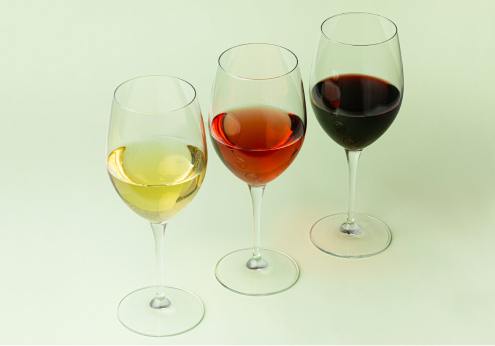Restless
by nature
Cádiz and its great winemaking tradition, anchored to the wines of its historic D.O. Jerez-Xérès-Sherry, could lead one to think that the province wasn’t the land for still wines. However, in recent years this Andalusian province has undergone a radical change in form of the recovery of wines that had existed before, new projects, wineries, entrepreneurs, elaborations… All of them position Cádiz as an exciting territory to produce this type of unfortified wines. The wines from Cádiz are finding their niche among Andalusian and Spanish wines. The great awakening has taken place!
At present, the still wine sector is one of the fastest growing and most dynamic in the agri-food sector in Cádiz. Dry Sherry Wine bodegas that are expanding their range by producing still wines, recently opened bodegas that only produce this type of wine, boutique bodegas that have been pioneers, entrepreneurs who are creating small signature bodegas, groups of mayetos (as winegrowers are known in Sanlúcar) that are joining forces to produce and market their wines… The reality is that there is little rest for unfortified wines of Cádiz, and a great deal of activity and dynamism, indeed.

The Palomino grapes are some of the protagonists of such restlessness, coupled with its albariza soil – a white soil that characterises the undulating topography of Marco de Jerez (Jerez region) hills. The albariza is a marl (soft rock formed by sediments) with remains of diatoms and other types of fossils (algae and microscopic unicellular microorganisms). We should note that some 60 million years ago almost all of what we know today as Andalusia was submerged under the sea. When the water receded, a singular and unique terroir with sedimentary soils of special quality was defined for vine cultivation. Some of these wine estates, especially when they are located more than 45m above sea level, have soils of extraordinary quality. Grapes from these vineyards are being used to make magnificent wines, the so-called minimal intervention wines. In fact, a backward movement is now taking place: old vines and decades-old ways of white winemaking are being recovered, as well as ancient vineyards and wines based entirely on the terroir. Each wine has a justified traceability, which allows us to perceive the different textures and nuances of each wine estate. They’re certainly trendy wines!
Several oenologists, winegrowers and winemakers are involved in this revival of the old techniques that used to be called ordinary wines. They’ve been pioneers in their way of understanding still wine in the Marco de Jerez. They’ve revalued the old vines and wine production with the emphasis on their terroir of origin, rather than on the winemaking and ageing process.

Recently, a few still wine bodegas in the area have formed the Albariza Territory Association with a self-imposed quality stamp that guarantees consumers honest work, traceability and respect for the wine culture of the Jerez region.
But it isn’t only the Palomino grape that’s at the centre of the white wine movement in Cádiz. There were around 40 varieties before phylloxera. There’s a growing effort to recover some of them, such as the Uva Rey, Perruno, Mantúa Castellano, Cañocazo or Vijiriega to produce new wines.
The result of all this movement in the Marco de Jerez are wines that are achieving considerable success in the international haute cuisine and reaping prestige among experts. Mineral, saline, floral…. with a differentiated character and diverse taste depending on the wine estate they come from. Fresh wines linked to the Atlantic Ocean with high quality and their own personality – something that brings novelty to the Spanish wine scene.
Sparkling wines from Cádiz are another growing trend. Sparkling wines from albariza soils made with Palomino grapes only, or coupled with other varieties, following different elaboration methods. Some of them are artisanal productions with surprising results. Others come from large wineries that are keen to venture into this type of wine.
On the other hand, the Pedro Ximenez variety, traditionally linked to the sweet wines of the D.O. Jerez-Xérès-Sherry, is being used in the elaboration of various coupages, giving rise to very interesting still and sparkling wines and even to some single-varietal dry wines of great elegance.
The world of red wine has also been developing well over the last few years. As far as native varieties are concerned, Tintilla de Rota stands out – a very small grape that was typical of this region and which, despite having a glorious past, almost disappeared. But it’s been recovered by several enterprising bodegas and some of the wines made from it are now gaining considerable recognition.
There are also winemakers and wineries putting faith in new winemaking techniques and the use of other grape varieties that they believe can have good performance in the area. Grapes such as Cabernet Sauvignon, Tempranillo, Syrah and Chardonnay have been very successful and are now bringing a lot of joy to the sector.

The PGI Vinos de la Tierra de Cádiz was created in 2005. The Andalusian wine-growing region it covers includes the municipalities of Arcos de la Frontera, Chiclana de la Frontera, Chipiona, El Puerto de Santa María, Jerez de la Frontera, Prado del Rey, Puerto Real, Rota, Sanlúcar de Barrameda, Olvera, Setenil, Villamartín, Bornos, Trebujena and San José del Valle.

Its wines can be made with the red grape varieties: Syrah, Monastrell, Merlot, Tintilla de Rota, Petit Verdot Cabernet Franc, Garnacha Tinta, Tempranillo, and Cabernet Sauvignon, and with the white varieties: Garrido, Palomino, Chardonnay, Moscatel, Mantía, Perruno, Macabeo, Sauvignon Blanc and Pedro Ximénez.
Among the red wine regions of Cádiz, the bodegas of Jerez and Arcos de la Frontera stand out, some of them true pioneers in the province. Likewise, Sierra de Cádiz bodegas that are also innovating, sometimes go back to old varieties.
The certification of organic wines is constantly growing, both by large wineries and small winemakers with new initiatives. Biodynamic production has also been adopted in some viticulture projects.

